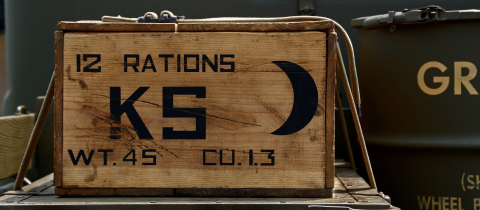If you’re not particularly salmon savvy you may be under the impression that “salmon” is an individual species of fish, like how a black bear is an individual species of bear. That, however, is not true of our fishy friends. In fact, there are two main divisions of salmon: Atlantic and Pacific.
Atlantic salmon are big fish found in the northern Atlantic Ocean weighing 8-12 pounds when fully grown. Their meat is known to taste very mild and is generally cheaper than other types of salmon, due to the fact that nearly all of the Atlantic salmon commercially available today is farmed.
Climate change, human colonization, habitat destruction, and overfishing have decimated the wild populations of Atlantic salmon that were once abundant throughout the northern Atlantic. Lake Ontario was once home to this fish, but by 1900 the population was completely extinct. While there are still wild Atlantic Salmon alive and swimming, their capture is strictly regulated, hence the need for fish farms to fill this void.
What about Pacific salmon? Well, its name is a misnomer, since there isn’t one species of fish called Pacific salmon, but rather seven different species of salmon who live in the pacific: Sockeye, Chinook, masu (found mainly near East Asia), pink, Coho and Chum. While the Pacific salmons have suffered population losses due to humans and climate change, their numbers haven’t been decimated to the extent of the Atlantic salmon, so, wild-caught Pacific salmons are still commercially available.
Chinook (also called King) salmon are the largest of the Pacific salmons, weighing between 20 and 135 pounds. They’re known for being fatty, making them of value to chefs, and also quite pricey, due to their general rarity amongst fish. If you’re after something a little cheaper but still fat-filled, the Coho might be for you. At roughly 20 pounds in size, it is often cooked whole. Your low-fat salmon options include the lesser-known Chum or pink salmons, both quite small and low in fat, as well as the well-known, medium-sized, and bright pink Sockeye.
Whichever type of salmon you choose to eat though, you’ll want to find out where it was caught and whether it was farm-raised or wild-caught. Not for culinary purposes, since at least one study found that farmed salmon was as acceptable to eaters as wild salmon, but rather for health ones.
Quite a few studies have examined the levels of contaminants like PCBs (polychlorinated biphenyls), PBDEs (polybrominated diphenylethers), PAHs (polycyclic aromatic hydrocarbons) and mercury, and the results have not been confidence inspiring.
A 2001 study found that farmed salmon showed higher levels of PCBs, PBDEs, DLCs (dioxin-like compounds) and other chlorine-containing pesticides that pose significant health risks to humans. Similarly, a 2004 study found high levels of organochlorine contaminants in farmed fish and found that farmed salmon originating in Europe had much higher contaminant concentrations than salmon originating in North America or Chile.
The contaminants seem to get into the salmon through their food. Commercially available salmon feeds are extremely high in contaminants like PCBs and PBDEs, likely due to being made from small fish who themselves harbour high concentrations of contamination.
Interestingly enough, mercury, the contaminant we are used to hearing about in fish, is not an issue for either wild or farmed salmon. One study found that there’s less mercury in B.C. raised salmon than other foods like eggs, honey or vegetables.
Several studies have found that as few as one meal per month of farmed Atlantic salmon can expose the eater to contaminant levels that exceed those set by governing bodies like the World Health Organization. To reach a similar level of contamination by eating wild-caught salmon alone would take more than 4-16 meals per month. You can see a representative chart of this data (based on the United States Environmental Protections Agency’s guidelines) below.

(source: http://www.ncbi.nlm.nih.gov/pubmed/14716013)
Fish farms can also have devastating environmental consequences due to antibiotic use, waste accumulation, disease spread, escaped fish and more. These effects are bad not only for the surrounding oceans but for the fish too. Infections like sea lice can cause fish extreme pain or even kill them, and the genetic disorders common in farmed fish like curved spines or malformed jaws can severely harm their welfare.
So, what does this all mean for those who feed on fish?
You should keep in mind the potential risks of eating farm-raised salmon while grocery shopping and remember that you can minimize your exposure to these contaminants by choosing salmon that is either wild-caught or farm-raised in North America whenever possible.
If you’re eating salmon mainly for the omega-3 fatty acids, I have some good news and some bad news. The good news is that there are several non-meat sources of omega-3s, such as flax, chia, and hemp seeds, flaxseed oil, and eggs. The bad news is that many of the supposed health benefits of omega-3s have been largely overblown. Our own Dr. Christopher Labos has written about omega-3’s ineffectiveness in preventing cardiovascular events and quite a few Cochrane reviews have found no benefits from fish oil for many conditions including ulcerative colitis, asthma, Crohn’s disease, allergies in children and dementia.
Want to comment? Visit the post on our FB Page!







